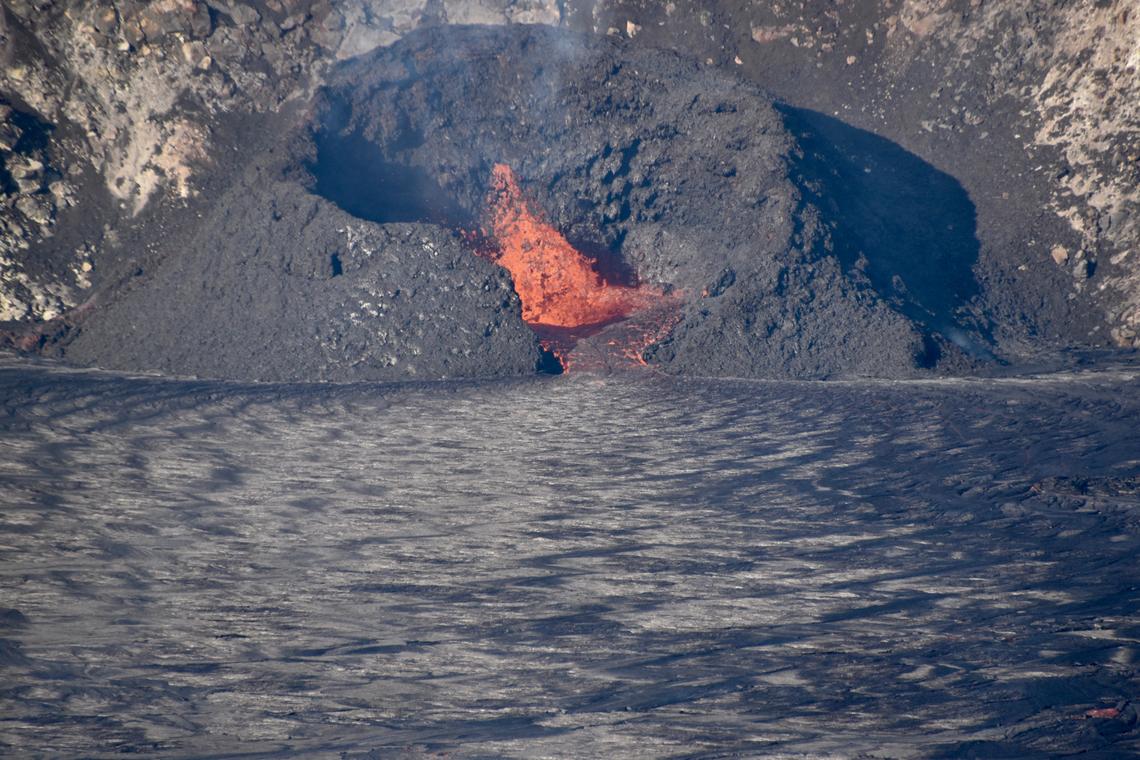A telephoto image of the the west vent taken on the morning of October 15, during an HVO helicopter overflight of Kīlauea summit. Low lava fountaining activity continues from the vent in the western wall of Halema‘uma‘u. The lava within the surrounding spatter cone is ponded at a higher elevation than the lava lake surface (shiny silver texture in foreground). The lava flows down a short spillway through a gap in the cone, and into the lake. For scale, the maximum height of the cone above the lake surface is 25–30 meters (about 80–100 ft). USGS photo taken by B. Carr.

This overview photo of the Halema‘uma‘u lava lake was captured around noon on Friday, October 15, 2021, from the northwest rim of the crater. The western fissure (lower right) continues to erupt lava into the west side of the lava lake (right). The east side of the lake (left) is mostly stagnated and solidified on the surface. The lava lake measures approximately 1,035 m (3,396 ft) long in the east–west direction and 745 m (2,444 ft) wide in the north–south direction. USGS photo taken by M. Zoeller.

A telephoto view of the west vent supplying lava to the lava lake in Halema‘uma‘u, at Kīlauea summit. In the bottom right, the western fissure complex from the Dec. 2020–May 2021 eruption is visible as a spiny dull dark brown and red feature. The old fissure has been lifted up by the current lava lake, and appears to be floating on the surface (similar to how an iceberg floats in the ocean). This photo was taken during a Hawaiian Volcano Observatory helicopter overflight on October 15 2021. USGS photo by N. Deligne.

In this photo taken during a helicopter overflight of Halema‘uma‘u crater on October 15, lava can be seen fountaining within the western vent cone and flowing down a short spillway into the lava lake. The main island created in the initial stages of the Dec. 2020–May 2021 eruption is in the foreground and continues to rise with the lake surface. The remains of the west vent from the previous eruption can also be seen on the right side of the image. USGS photo by B. Carr.


